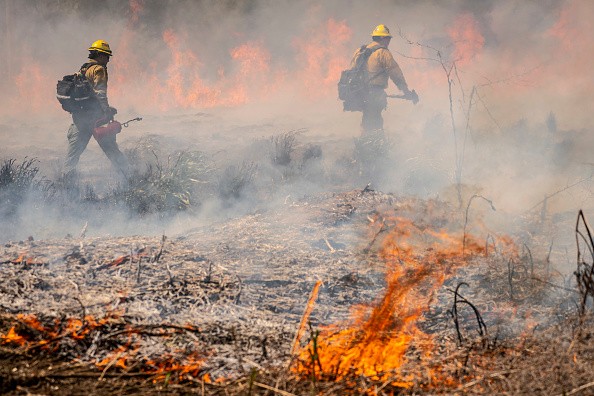A wildfire spreads across almost 120 square miles in central Arizona. It has destroyed two homes and three outbuildings.

Combating Telegraph Fires
As firefighters combat the Telegraph Fire in Superior, Arizona, they encounter issues like the public entering closed areas and their own equipment sparking in the arid vegetation.
During a briefing, Tuesday night, Dean McAlister, a fire information officer, stated, "Even our own fire apparatus is igniting fires." "The (heavy equipment's) blades and tracks sparking against the fuels have actually started several fires along the fire line."
According to CNN, crews have been able to put out the little fires as they occur. However, officials appealed to locals and others not to drive into blocked areas to avoid starting other fires.
Damages

According to Tuesday's report, one car became caught in a fireline cleared by a bulldozer.
"Public incursions not only imperil firefighters, but they also distract them from their core task - putting out fires," according to the update.
The Telegraph Fire, which was initially discovered on Friday, is being fought by almost 750 firefighters. On Wednesday morning, it was barely 21% contained. The reason is being looked into.
9th Largest Wildfire

According to the Arizona Republic, it is the ninth-largest wildfire in state history, according to McAlister.
Top-of-the-World, the Miami region west of the town limits, Miami south of U.S. Highway 60 from Dairy Canyon to Mackey's Camp, Oak Flat Campground, and Oaks Mobile Home and RV Park are all still under evacuation orders in Gila and Pinal counties.
Related Article: California Wildfire Destroyed 10,000 Redwood, Killing Off 10% of World's Sequoia Population
Evacuation
Superior, the remainder of Miami, Claypool, and sections of Central Heights and Cobre Valley Regional Medical Center have all been advised to be ready to evacuate at any time.
According to Carl Melford, the county emergency manager, at least 2,500 residences in Gila County have been evacuated. Melford, who had his belongings packed and waiting at his front door, estimated that 5,000 households were in "set" mode, meaning they were prepared to leave if necessary.
"We've seen some really intense fire seasons over the last three years," he added. "We've gotten extremely familiar with the steps involved in evacuating a neighborhood. However, this is the most extensive evacuation to date."
Mescal Fire

The Mescal Fire, a second significant wildfire burning several miles from the Telegraph Fire, was ordered to be evacuated again on Tuesday.
T11 Ranch and Beverly Hills land south of State Highway 70 have received a "Go" notification from the San Carlos Apache Tribe. The evacuation order for East El Capitan remained in effect.
According to Inciweb, the Mescal Fire, burning southeast of Globe, Arizona, has destroyed roughly 109 square miles as of Wednesday morning. It was just 33% contained. The Mescal Fire started on June 1 and is still being investigated.
Becky Stephenson is prepared to leave her Globe home with her parrot Buddy if the evacuation order is issued.
Drought
Stephenson, a plant biologist, told the Associated, "Honestly, it just makes me feel like I couldn't wait till they have it under control so I can go out and start helping them revegetate." "Thinking about all of the burnt plants and animals who have lost their environment during the mating season makes me sad."
According to the US Drought Monitor, the area where the flames are raging is suffering extreme drought. More than a quarter of the West is experiencing exceptional drought, with up to 50% of the region experiencing extreme or exceptional drought, the two most severe conditions.
The fire risk is growing due to a lack of rain, high temperatures, low humidity, and strong winds.
According to researchers, droughts are becoming longer, and rainfall is becoming more irregular across the West as a result of climate change. The average dry duration between rainstorms in the 1970s was 30 days. It's now 45.
Also Read: Mega-drought Drastically Affects Colorado River, Risking Water Shortage to 40 Million People
For similar news updates,don't forget to follow Nature World News
© 2024 NatureWorldNews.com All rights reserved. Do not reproduce without permission.

![Tsunami Hazard Zones: New US Map Shows Places at Risk of Flooding and Tsunamis Amid Rising Sea Levels [NOAA]](https://1471793142.rsc.cdn77.org/data/thumbs/full/70325/280/157/50/40/tsunami-hazard-zones-new-us-map-shows-places-at-risk-of-flooding-and-tsunamis-amid-rising-sea-levels-noaa.jpg)



